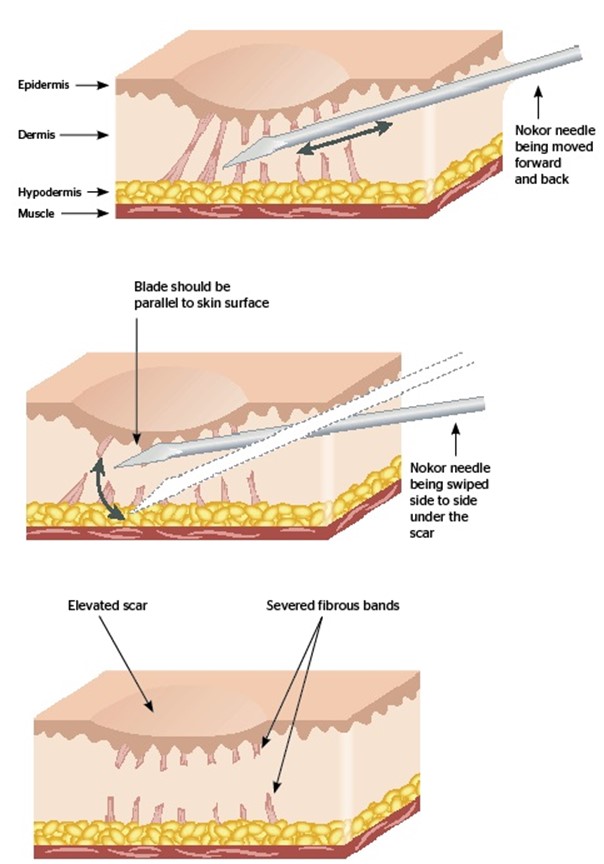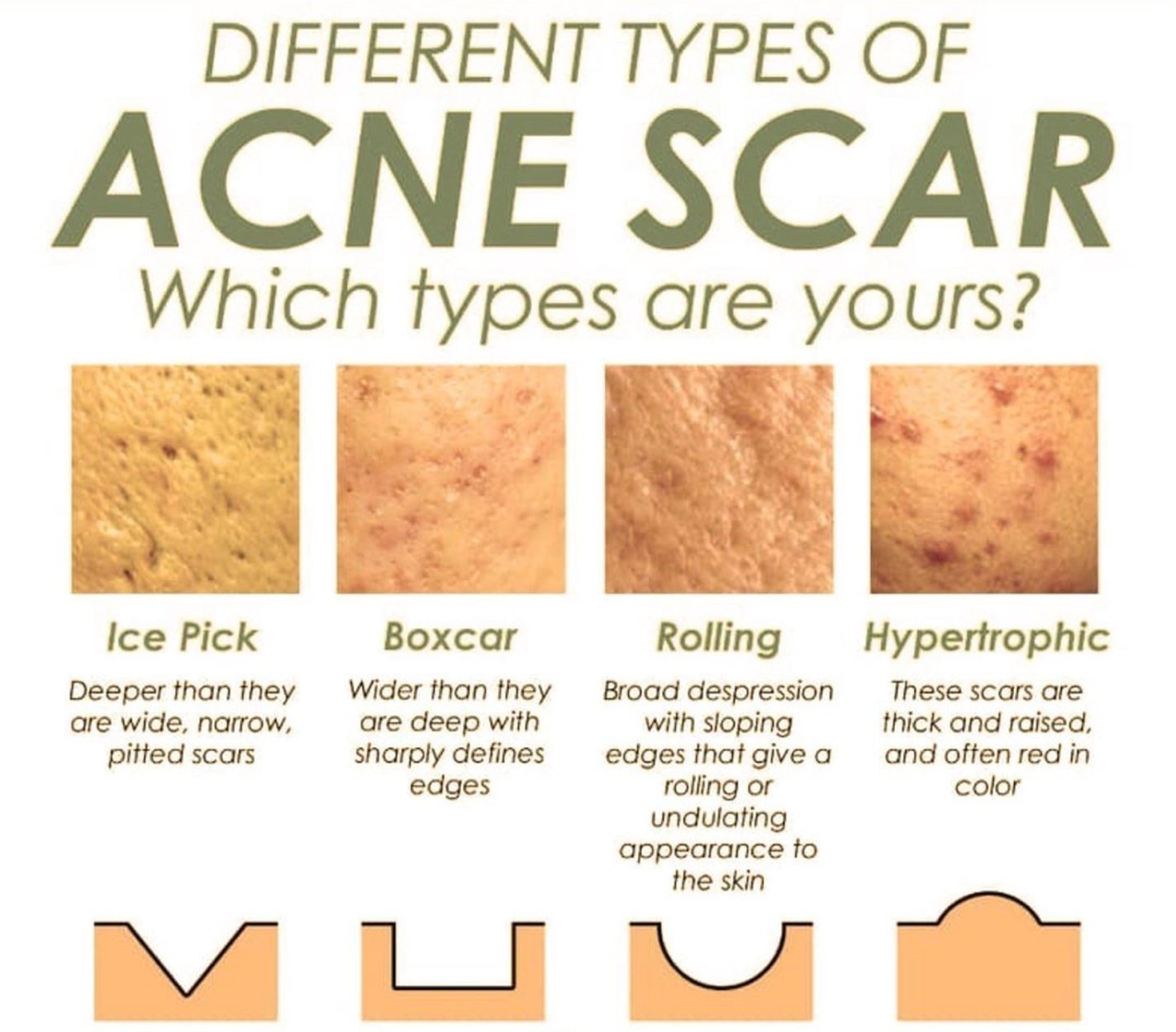Acne scars are stubborn, and no single treatment is best for everyone. One or a combination of the
following approaches might improve the appearance of your skin, depending on your scar type, your skin
type and the severity of the scarring. I have mentioned below, some of the commonly used techniques and
procedures that I apply in acne scar treatment, for your interest. On your visit, after detailed
examination, I will devise the treatment plan suitable for your problem.
-
Home skin care. Using sunscreen can help limit the contrast between
unscarred skin and a scar. Some medicated creams, such as those containing azelaic acid or hydroxyl
acids, might help too.
-
Subcision. Subcutaneous incisionless surgery, also called
subcision, is a minimally invasive procedure used to treat acne scars. This is a
very effective procedure, which forms the backbone of the acne scar therapy. It breaks the fibrotic
strands beneath the scar and dissociates the epidermis from the underlying connective tissue, inducing
new connective tissue formation, which elevates the depressed surface of the acne scars.

-
Soft tissue fillers. Injecting fat, prp or hyaluronic acid fillers under
the skin can plump the skin over indented scars. The goal is to make the scars less noticeable. Results
are temporary, so repeat treatments are needed to retain the effect.
-
TCA Cross. TCA CROSS is the chemical reconstruction
of skin scars (CROSS) using trichloroacetic acid (TCA). It is most often used as an outpatient clinic
procedure to treat atrophic acne scars.
The TCA CROSS procedure involves depositing small amounts
of TCA at high concentration onto the surface of the atrophic scar. This causes a local inflammatory
reaction leading to the formation of new collagen fibres. The aim is to improve the appearance of the
scar by increasing collagen reflectance and reducing shadows cast over scar depressions.
-
Laser resurfacing. This approach is increasingly popular and is often used
on boxcar and rolling scars. This technique however has an increased risk of side effects for people
with darker skin or a history of keloids.
-
Dermabrasion. This procedure is usually reserved for more severe scarring.
Your doctor removes the top layer of skin with a rapidly rotating brush or other device. Surface scars
may be completely removed, and deeper acne scars may appear less noticeable, however, potential side
effects include changes in skin color.
-
Chemical peel. Your doctor applies a chemical solution to the scar tissue
to remove the top layer of skin and minimize the appearance of deeper scars. You can repeat mild and
medium peels to maintain results. You can have only one deep peel. Potential side effects include
changes in skin color, especially with deep peels used on dark skin.
-
PRP Microneedling. Your doctor rolls a needle-studded device over the skin
to stimulate collagen formation in the underlying tissue. It's a safe, simple and effective technique
for acne scarring. Results are subtle, and you need repeat treatments.
-
Scar excision. Using a minor procedure called punch excision, your doctor
cuts out individual acne scars and repairs the wound with stitches or a skin graft.

